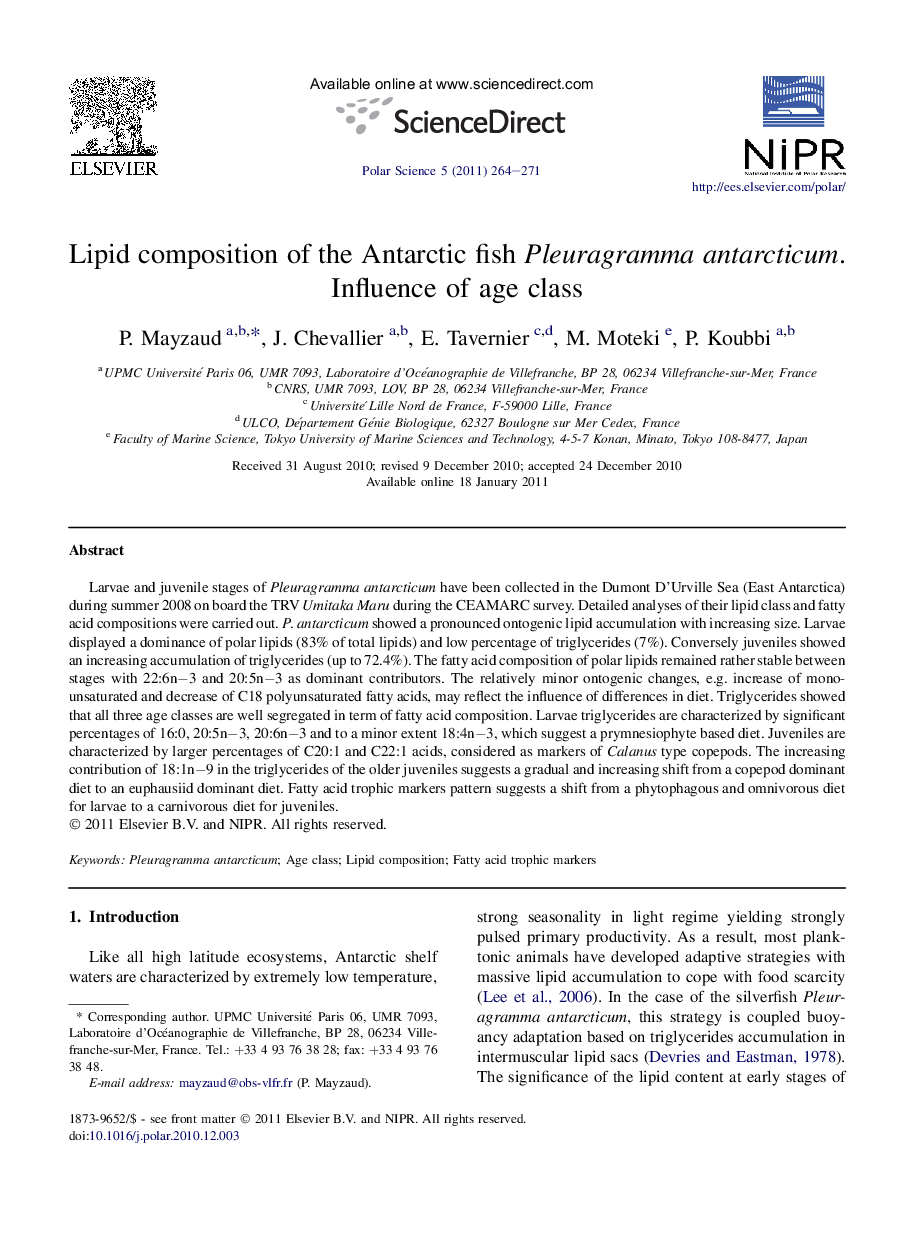| Article ID | Journal | Published Year | Pages | File Type |
|---|---|---|---|---|
| 4683250 | Polar Science | 2011 | 8 Pages |
Larvae and juvenile stages of Pleuragramma antarcticum have been collected in the Dumont D’Urville Sea (East Antarctica) during summer 2008 on board the TRV Umitaka Maru during the CEAMARC survey. Detailed analyses of their lipid class and fatty acid compositions were carried out. P. antarcticum showed a pronounced ontogenic lipid accumulation with increasing size. Larvae displayed a dominance of polar lipids (83% of total lipids) and low percentage of triglycerides (7%). Conversely juveniles showed an increasing accumulation of triglycerides (up to 72.4%). The fatty acid composition of polar lipids remained rather stable between stages with 22:6n−3 and 20:5n−3 as dominant contributors. The relatively minor ontogenic changes, e.g. increase of monounsaturated and decrease of C18 polyunsaturated fatty acids, may reflect the influence of differences in diet. Triglycerides showed that all three age classes are well segregated in term of fatty acid composition. Larvae triglycerides are characterized by significant percentages of 16:0, 20:5n−3, 20:6n−3 and to a minor extent 18:4n−3, which suggest a prymnesiophyte based diet. Juveniles are characterized by larger percentages of C20:1 and C22:1 acids, considered as markers of Calanus type copepods. The increasing contribution of 18:1n−9 in the triglycerides of the older juveniles suggests a gradual and increasing shift from a copepod dominant diet to an euphausiid dominant diet. Fatty acid trophic markers pattern suggests a shift from a phytophagous and omnivorous diet for larvae to a carnivorous diet for juveniles.
